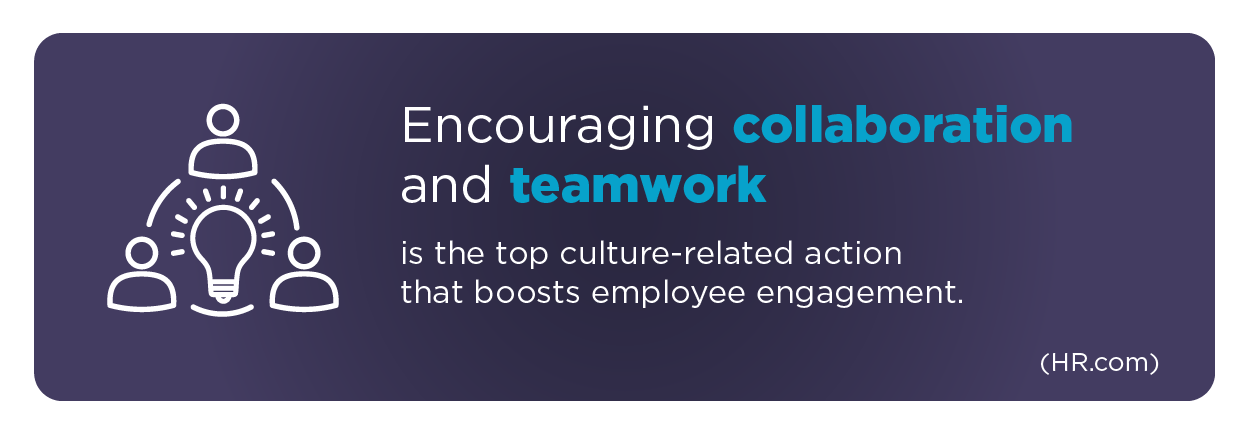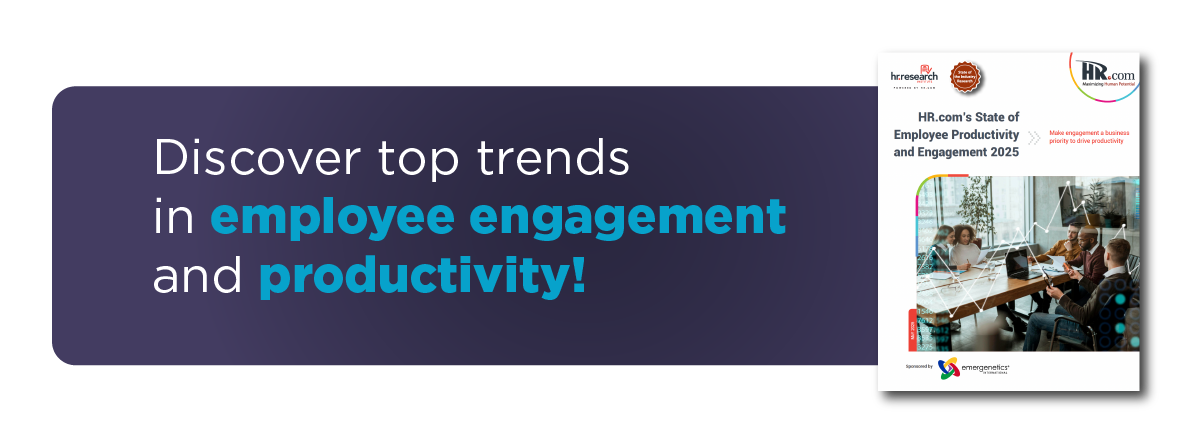With global employee engagement hovering at only 21%, [1] there seems to be a lot of room for improvement when it comes to supporting staff. Why is it so difficult to move the needle on this important metric?
I’ve found that some of the challenges lie with the assumptions and preconceived notions that leaders may have about engagement. Let’s debunk a few of the most common myths to set the foundation for positive change.
Myth #1: Engagement = Happiness = Satisfaction
Phrases like employee engagement, job satisfaction or workplace happiness are often used interchangeably. While these concepts are typically related to one another and usually correlate, they represent distinct ideas. At its core, engagement means being motivated and invested in the company’s success.
Having a clear understanding of what encompasses each term will empower teams to focus on the levers that truly influence this datapoint rather than those that more closely align with satisfaction and happiness.
Myth #2: More Perks Are the Solution
When workplace engagement began gaining momentum in the early 2000s, we started to see the rise of offerings like ping-pong tables in the office, free meals or company-wide events. These perks can certainly have an impact on morale; however, they are not the primary drivers of motivation and investment.
The reality is that staff need meaningful benefits, a sense of purpose and an emotional connection to the organization to feel committed to it and willing to put in discretionary effort.
Myth #3: One Size Fits All
When building initiatives to engage staff, HR departments sometimes overlook the fact that individuals are seeking different things from their employers and their work. What may entice one person could drain another. It’s important to allow for choice and embrace the distinct ways that people prefer to be inspired.
Effective programs will honor individual strengths and preferences while giving personnel the opportunity to determine how they participate.
Myth #4 – An Annual Survey Is Sufficient
A yearly survey is a great way to start. However, a point-in-time assessment is unlikely to capture the highs and lows individuals have felt or reveal the challenges and positive experiences that have affected staff throughout the year. Organizations with high employee engagement are five times more likely to track these sentiments at least quarterly [2] compared to those with low scores.
Soliciting feedback on a regular basis through formal and informal channels can help elevate your metrics.
Myth #5 – HR Alone Can Manage Engagement
HR is certainly part of the solution when it comes to boosting commitment levels from the workforce. However, they are just one part of the equation. Executives and managers have a significant impact on the workplace experience, and collaborative cultures also play a part in increasing engagement rates.  [2]
[2]
As you analyze opportunities for improvement, make sure to involve multiple stakeholders, from leadership to department heads to supervisors, and assess how each role can influence employee involvement and drive.
Myth #6 – Managers Make All the Difference
Supervisors certainly affect the day-to-day experience of personnel. It has been widely reported that they account 70% of the variance in engagement scores [3]. As I described above, however, they are not the only ones who can transform the way your staff feel about the organization. It’s important to remember that even an incredible manager cannot fully offset an unhealthy culture.
Prioritizing professional development to grow supervisors’ leadership skills, while also surrounding them with supportive tools and a positive climate, will help staff thrive.
Myth #7 – The Cost Outweighs the Benefits
A single disengaged employee costs companies about 34% of that individual’s salary [4]. That is a significant loss, especially when you consider that only 30% of HR professionals report that the average staff member is highly engaged [2]. To illustrate, consider a group of 10 disengaged workers, making $50,000 USD. That’s $170,000 in lost productivity!
Investing in the engagement of your people is a sound financial strategy, especially when a highly committed workforce can increase profitability by 23% [5].
An employee-centric workplace has the potential to positively transform the lives of your people and your organization’s financial position. To start making meaningful changes, I invite you to explore a few resources.
First, our CEO, Marie Unger, recently presented 3 Drivers of Employee Engagement in a presentation with HR.com, which you can watch here [6]. Additionally, you can download the HR.com State of Employee Productivity and Engagement report to learn more about the differences between the companies that are leading the way in terms of workforce motivation and performance and those that are lagging behind.  [2]
[2]
With these insights, you’ll be well on your way to elevating commitment in your organization.
How can Emergenetics help you cultivate an employee-centric workplace? Fill out the form below to connect with one of our team members!